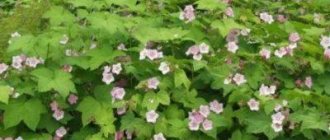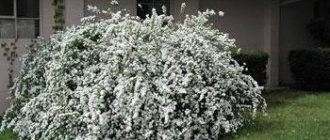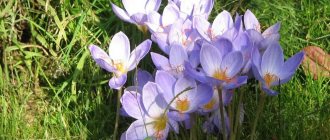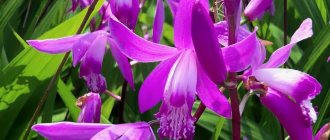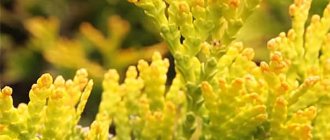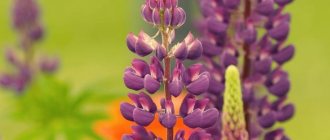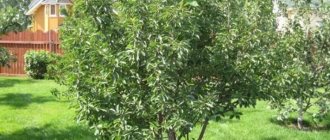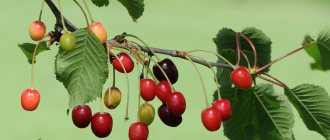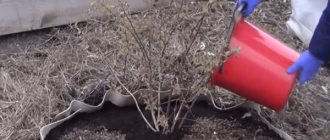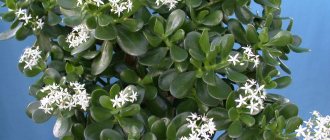General information about the plant
Many species are cultivated as ornamental plants: carnations are used in landscape design and in bouquets. Dianthus is classified as a herb and sometimes as a low-growing shrub.
Leaves are linear or linear-lanceolate. The flowers are often solitary, with 5 petals, 2 styles, 10 stamens and a cylindrical calyx. There are types of carnations whose flowers are collected in inflorescences. Petals come in a wide variety of shapes: smooth, corrugated, fringed, with a torn or wavy edge.
The stem is smooth and knotty, green, blue or bluish in color. Depending on the variety, the length of the stem varies from 5 to 100 cm. The fruit is a cylindrical capsule with black oval seeds.
Annual Chianti carnation
The stem of the carnation is distinguished by two types of shoots: flowering and vegetative, which are much shorter than the first.
The variety of colors is constantly increasing thanks to hybrid varieties. In addition to the classic scarlet carnation, you can find pink, lilac, white and even green flowers. Multi-colored and velvety varieties of all shades of the rainbow seem especially impressive.
Carnation blooms from early summer to late autumn. Many species emit a characteristic pleasant aroma.
Variety of species
Popular types of perennial carnation were bred by breeders taking into account the cold climate of temperate latitudes. They differ in flowering time and the shape, size and color of the buds. The most common hybrid varieties and species are:
Travyanka
The plant is native to coastal Spain and France. The culture has two types of stems - non-colorful and colorful. The former are densely covered with leaves, the latter are long, branched with forked inflorescences. The color of the petals is red, pink, carmine. The leaves are narrow, linear. Flowering is long - from June to October. Actively reproduces by self-seeding.
Alpine carnation
A low-growing perennial crop native to the eastern Alps. Height 15-25 cm. Flowers pink and crimson, the edges of the petals are jagged. An optimal species for growing in poor, rocky areas. Flowering occurs in June-July; in favorable conditions, it blooms again in August.
Turkish cloves
A popular ornamental plant, attractive with an unusual combination of several shades in one flower. Fragrant flowers form large corymbose inflorescences up to 12 cm in diameter. Knobby stems grow to a height of up to 75 cm. Lanceolate leaves are green, sometimes blue-green. The flower stands well when cut for up to two weeks. Common varieties: PinkBeauty, ScarletBeauty, WhiteQueen. Flowering continues for two months, beginning in June.
Interesting fact. The second name of the Turkish carnation – “bearded” – appeared due to the structure of the bracts. They are covered with fluffy hairs.
Dianthus Knapp
The only perennial species with yellow flowers is Dianthus Knappi. The homeland of the plant is Hungary and Romania. The variety “Yellow Harmony” is common in gardening. Slightly branched shrub 35-45 cm high. Leaves are narrow, green. Flowers with serrated petals, diameter 2 cm. Blooms in mid-summer, characterized by long flowering (40-45 days). A plant grown from seeds blooms in the second year. Resistant to drought and frost, does not tolerate high humidity. Used for planting in flower beds and borders.
Shabo
Carnation Shabot is a perennial plant with double flowers. The hybrid ornamental crop is widespread in floriculture. A bush of reverse pyramidal shape with a main stele 30-60 cm high. Popular varieties with double large flowers: “Aurora”, “La France”, “Pink Queen”. The bluish-green leaves are 6-12 cm long. The bushes bloom remontantly - lasts from July until the first frost. The plant is grown for landscaping balconies and verandas, designing mixborders and ridges.
Interesting fact. The varieties “Maria Shabot” and “Jeanne Dionysus”, popular among modern flower growers, were created in 1897 by the pharmacist Shabot.
The varieties of the hybrid group F-1 are especially popular when planting flower beds. They are low-growing, compact, abundantly covered with double flowers. During prolonged flowering, plants need to be fertilized with mineral fertilizers.
Dianthus pinnata
A perennial of medium height with bluish-green leaves and stems. The curtain grows for 3-5 years, significantly increasing in size. Prefers loose calcareous soils. Petals are finely dissected. Flowers simple or double. Depending on the variety, they are single or collected in inflorescences. Height up to 30 cm. Flowering time from May to September. Famous varieties “Desdemona”, “Alba”, “Sonata”. A light-loving and frost-resistant plant, it needs good watering, but without stagnant moisture. Propagated by cuttings and seeds. Before planting, drainage is arranged.
Dutch carnation
Garden carnation or Dianthus caryophyllus is native to the Mediterranean. Cultivated as a biennial. The height of the bushes is a record for decorative carnations - 80 cm. The flowers are large, double. The culture grows in moist, fertile soils. The Dutch species has become the basis for the selection of many elite varieties, including Chabot and Grenadine. Flowering period from June to early autumn.
Chinese carnation
Perennial in the form of a bush up to 50 cm high. The leaves are green, paired, long. Some varieties have twisted ones. In nature, the culture grows in China, Korea and Mongolia. Decorative types of carnations are popular all over the world. The first breeding work began in 1702; over centuries of work, many hybrids were developed. The photo shows Chinese carnation flowers from the “Diana mixF1” series. It includes instances:
- White with a purple or red eye;
- Pink with veins;
- Salmon;
- Crimson;
- White;
- Scarletpicote.
The flowers of new varieties are one-color, with a contrasting border or eye, two-color. Dwarf bushes up to 15 cm high have been bred and are suitable for growing in flowerpots. The edges of the petals are jagged or fringed. Flowering is continuous, long, wavy. The flowers have a weak, delicate aroma.
History, legends about carnations
The earliest information about cloves is found in the myths of Ancient Greece, after which mention of it disappears for 12 centuries. Some historians believe that it was the Crusaders who first brought the flower to Europe as a cure for the plague and a symbol of victory. During Napoleon's time, the color of the carnation was chosen for the ribbon of the Legion of Honor.
European artists of the 16th century made carnations an integral part of portraits and still lifes. The flower is mentioned in Shakespeare's play The Winter's Tale. Queen Elizabeth introduced the fashion for carnations in England.
Bouquet of carnations
The carnation is one of the symbols of the Soviet era. Soviet citizens carried red bouquets to demonstrations dedicated to the day of the October Revolution. For more than 70 years in the CIS countries, the carnation has remained a symbol of victory in the Great Patriotic War.
Dianthus deltoides
This perennial herbaceous plant is found on the territory from the Atlantic coast of Western Europe (Spain, France) to Siberia, and also grows in some areas of India.
The height of the thin stem is from 10 to 40 cm. This carnation is often used as a ground cover plant: in rock gardens, rockeries and borders. The plant forms loose turf, the flowers are only 1.5-2 cm in diameter. In nature, their color is pink and carmine, sometimes white, and in cultivation there are varieties with patterns on the petals.
In gardens, the variety mixture most often grown is Canta Libra (short carnations with pink, red and white flowers that bloom 3 months after sowing the seeds), Maiden Pinke (plants with red rings on white and pinkish-red flowers, bloom the next year after sowing). As well as the varieties Fragrant Carpet (with a large number of red flowers) and Arctic Fire (up to 20 cm high, with white flowers with a red ring, flowering lasts from late May to mid-July).
Seeds and seedlings
Seeds of annual plants are planted in boxes in early spring. Carnation seedlings will appear in 2-3 months, but only with the onset of warm weather are the seedlings placed in open ground. Turkish and Shabo carnations are sown in February, and perennial garden plants in March.
Biennials such as Turkish and Grenadine are planted in open ground in May, but these plants will bloom only the following summer.
Seeds
To plant seeds, you will need containers with a moist substrate of soil and sand in a 2:1 ratio. Due to the small size of the seeds, they are sown on the surface of the soil and lightly crushed with earth, moistening the substrate with a spray bottle. A weak solution of potassium permanganate will help protect seeds from fungal diseases. The containers are covered with polyethylene and placed in a warm, bright place. When the seeds sprout, the greenhouses are opened.
Seedlings are planted in small pots at a distance of at least 5 cm from each other , watered periodically and ensure that the ambient temperature does not fall below 20 °C. Lower air temperatures slow down seedlings.
Propagating and caring for carnations at home
If all the nuances and features are observed, cloves can easily live for 6 years, even at home.
For indoor planting of this plant, the propagation method using seeds is ideal. It is the simplest and most common. In addition, at home there is no need for seedlings at all, because the seeds are planted immediately in a flower pot, where a beautiful, fragrant flower will then grow.
The time for sowing seeds is strictly February-March, this is done so that the appearance of the first flowers is closer to the beginning of summer. A special substrate is prepared for sowing; it consists of several parts: turf and leaf soil, peat, sand. All this is mixed in proportions 2:1:1:1. In order to protect the plant from infection with various diseases and pests, the prepared mixture is disinfected.
A hot solution of potassium permanganate is perfect for these purposes. The mixture is watered with the solution in advance. Drainage is placed at the very bottom of the pot. This is due to the fact that the plant does not tolerate stagnation of moisture in the soil. The number of seeds planted depends on the type of container where they are going to be placed. If you plan to grow it in a pot, 2-3 seeds will be enough. If in a container, the density must be made less, ensuring a distance of at least 20 cm between the seeds.
The seeds are planted in the soil to a depth of approximately 0.3 mm. Then water it, but only through a special spray nozzle. This is done in order not to deepen the grains into the soil and not wash them away. To ensure growth, the container with the seeds is placed where the temperature will not be lower, but not higher than +24 °C. To achieve the desired figure, cover the container with something.
Caring for carnations grown indoors is much easier than caring for a plant grown in open ground. The required minimum: regular loosening of the soil, fertilizing and pruning.
At the end of the flowering period, the inflorescences are cut off along with the top of the stem. Thanks to this, after some time the carnation will have the opportunity to bloom again, delighting the home inhabitants with its elegant appearance.
Since she is not a supporter of excessive watering and dampness, it is not recommended to place flower pots in rooms with high humidity, for example, in the bathroom. You need to install the pot in a well-ventilated area. Water only when the top layer of soil has dried, approximately 10 mm. You can’t spray the plant, it will have a bad effect on its growth.
You can also feed indoor carnations, because this will allow the plant to grow faster and stronger. The first fertilizing using the irrigation method is carried out as soon as the stem has grown to a height of at least 9 cm. The second is for the formation of buds.
Carnations are propagated mainly by cuttings, that is, separating the flower from the bush. The method is universal. They can multiply almost all perennial carnations. For planting, sand or perlite is required. The planting process itself occurs in late spring, early summer. This is explained by the fact that during this period of time the shoots become most noticeable. After this, they can no longer be confused with flower stalks.
The most suitable part of the plant for this method is the stems, and their length must be at least 5 cm. The number of leaves on the stem is strictly observed - at least 3. After which the excess ones are removed from the 2 lower nodes. Then an incision is made slightly below the location of the shoot. The depth of the cut is very important; it should be exactly 1/3 of the diameter of the stem. Next, the cuttings are placed in the soil prepared for planting them. This entire structure opens in the summer.
However, for example, the Turkish type of carnations can be easily propagated by dividing the bush. This should be done in early spring; if everything is done correctly, flowering will begin in the summer.
Varieties with long shoots are recommended to be propagated by layering. This is done as follows: first, an incision is made from the bottom of the stem - upward, to a depth of approximately 1/3 of the stem. After that, the part with the cut is pinched to the soil, sand is poured on top of it, and then watering is carried out. When new growth appears, the plant will need to be separated and replanted.
Propagation by seeds is only relevant for annual varieties of this plant.
Planting carnations is recommended towards the end of spring. Pots filled with sand are ideal as containers. The temperature most favorable for the plant should not exceed + 20 °C. Seedlings should be replanted strictly after 4 pairs of leaves appear.
Reproduction by cuttings
All types of perennial carnations are propagated by cuttings; this method is not suitable for annual plants. Cuttings are selected from among well-developed vegetative shoots at the end of May. The length of the cutting should be from 3-9 cm, and the shoot should have at least 6 healthy leaves.
Cuttings of eustoma and carnation
The shoot is cut from the stem under the node using a sharp pruner and the leaves are removed from its lower part. An incision is made along the stem.
The cuttings are placed in a pot with perlite and covered with a jar. If the greenhouse is made correctly, rooting will occur within 3 weeks after planting. Next, you need to prepare a container with calcined sand or perlite and plant the cuttings in it.
Dianthus perennial
This wonderful flower is quite easy to grow. To obtain a new specimen, you can use several types of reproduction:
- seeds;
- cuttings;
- layering;
- dividing the bush.
Indoor cloves - home care
The choice of method depends on the type of flower and the technology for growing it. Warm-season varieties of carnation are usually grown as an annual or biennial plant. There are certain species, like the Dutch variety, that can only be fully grown in a greenhouse.
Perennial garden carnation - how best to propagate
The two most common methods of propagation of this species are seeds and cuttings. Both of these methods are widely used by gardeners.
Propagation by seeds is preferable for perennial carnations. This makes it possible to obtain a plant with a different shade of inflorescences and allows you to grow this crop in pots and flowerpots. In addition, it is not always possible to get cuttings of the plant of the exact variety you dreamed of. Purchasing seeds in this sense is a simpler task.
You can get perennial carnation seeds yourself. To do this, you should wait for the end of flowering and leave a few faded inflorescences on the bush for the seeds to ripen. When the seeds are ripe, they are carefully crushed into a small paper envelope and laid out in a thin layer to dry. Next, the prepared seeds are placed in sealed packaging and stored in a dark and dry place.
Attention! To obtain seeds, you should choose only healthy plants. Some diseases can be transferred to young seedlings.
Reproduction by layering and dividing the bush
The method is suitable for propagation of large species.
A longitudinal incision is made at the internode of strong lower shoots, the shoot is bent to the ground and rooted with the incised area. The cuttings are sprinkled with soil and watered. Once roots appear, the plant can be separated and replanted.
Schematic representation of the process
Reproduction by dividing the bush is suitable only for some species, such as Turkish and pinnate.
Types and varieties of garden carnations
All carnations are flowers that belong to the carnation family. They represent the most famous long-term plantings cultivated in floriculture as annuals, biennials and perennials. More than 25 types of soda cloves have been identified, but only 5 of them, which, as a rule, have an abundance of categories and varieties, have become widely used.
• Pinnate carnation - low culture, up to 25-30 cm, single flowers - snow-white, pink, scarlet. Petals are obovate, palmately dissected. The shoots create a dense bluish-emerald turf. It blooms in July-August, loves calcareous, loose, warm soils. Its varieties are considered: iosotis (40 cm high), semperflorens (25 cm) with remontant double flowers.
• Carnation pinnate “Terry carpet”, mixture. An incredibly decorative plant: as it grows, it creates an elaborate emerald carpet, over which a huge number of fragrant velvet flowers bloom. Widely used in the design of borders and other flower beds. Grow by seedling method. At a good temperature of +16...+20C, sprouts appear within 7-14 days. Planting is done in open ground as soon as the threat of return of frost has passed. Loves light, calcareous soils and a sunny location. Flowering in June-September. Planting height 30 cm.
• Plume carnation (musk) - height 50 cm, characterized by multi-colored velvety flowers with a great spicy fragrance.
• Sandy carnation is a small plant with pinnately fringed flowers. Its decorative form is “Nostalgia”. Numerous snow-white flowers with fringed edges embellish mixed borders, borders, rock slides and supporting walls with abundant blooms. Place in a sunny place with light, permeable, limed soil. The plant is undemanding. Withstands picking very well. Flowering usually occurs in July-August. The height of the planting is 20−30 cm.
• Carnation herbaceous - low growth (up to 20−25 cm), elongated leaves, dark emerald, sometimes with redness. It has a huge variety of colors of flowers (scarlet with a dark stripe and light dots, dark pink and carmine). The grass blooms from the beginning of June for almost 2 months. On the basis of this species, many species and hybrids have been formed.
• Carnation grayish-blue “Moulin Rouge”, mixture. A bright mixture of carnations of rich pink color with a delicate aroma. Rich flowering will embellish any flower garden, border or mixed border. At a suitable temperature of +16...+20 °C, sprouts appear within 7-14 days. Place in a sunny place with light, permeable, limed soil. Unpretentious. Flowering in June-July. Plant height 25 cm.
• Dutch carnation is a rare combination of flower beauty, aroma and general unpretentiousness. As a result of long-term hybridization, large-flowered, double, and remontant greenhouse varieties were developed on the basis of this species.
Carnations in landscape design
Variegated Chinese and Turkish carnations go well with other flowers in neutral monochrome shades.
Variety Eydangeri
Some useful tips for flower neighbors:
- Roses inhibit the growth of carnations, so flowers are not planted nearby. Arrange them only in cut form.
- It is not recommended to plant carnations next to tulips, since the plants are susceptible to the same diseases.
- Stagnation of moisture in the soil is contraindicated for the crop. Do not plant carnations in low-lying areas or wetlands.
- If you are choosing a low-growing species, choose grass or sand. Low-growing bushes do not exceed 25 cm during the flowering period.
- In a sunny area, the flower will bloom more abundantly and develop faster than in a shaded flowerbed.
- To design a rock garden or rock garden, plant perennial pinnate varieties.
A skillfully selected variety will harmonize well with plants of any type
Bright varieties of Turkish carnations look good next to tall shrubs, without fear of shading.
Dianthus superbus
This unpretentious and frost-resistant flower grows in meadows, forest edges, sea coasts, rocky slopes and sparse forests of temperate and moderately cold zones of Europe and Asia. It reaches a height of 50 cm.
Unlike the previous type, lush carnation forms a loose bush with fragrant flowers (4.5 cm in diameter), collected in a rare inflorescence. Their petals can be white, pink or purple. Flowering is observed at the end of June (lasts about a month) and in the first half of August (again).
The variety most often grown in cultivation is Breath of Love (with snow-white or pink flowers with jagged petals) and a mixture of white, pink and purple carnations under the general name “Lush” .
Fertilizer and feeding
Perennial carnation, like any ornamental plant, needs additional feeding throughout the growing season. You need to feed first in the spring, then when the buds appear and, of course, when color appears.
Remove weeds so that they do not interfere with the plant’s development. Attention! Do not use fresh manure or potassium-based fertilizers! Be careful with the amount of nitrogen fertilizer applied: excessive amounts can cause fungal diseases.
Garden carnations also respond well to mineral fertilizers.
